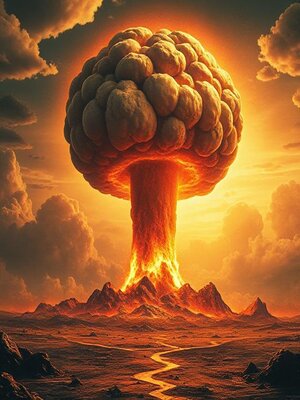
Sign up to save your library
With an OverDrive account, you can save your favorite libraries for at-a-glance information about availability. Find out more about OverDrive accounts.
Find this title in Libby, the library reading app by OverDrive.



Search for a digital library with this title
Title found at these libraries:
| Library Name | Distance |
|---|---|
| Loading... |
The term "atomic bomb" generally refers to nuclear weapons that derive their destructive force from nuclear reactions—either fission (splitting heavy atomic nuclei) or a combination of fission and fusion (joining light nuclei, known as thermonuclear or hydrogen bombs). Here's an organized overview of the various types of atomic bombs, how they work, and notable examples:
1. Fission Bombs ("Atomic Bombs" Proper)
These are the original atomic bombs, developed during World War II.
Basic Principle:
Fission bombs use the splitting of heavy atomic nuclei (usually Uranium-235 or Plutonium-239) to release enormous energy.
Types:
a. Gun-Type Design
A projectile of fissile material is fired into another piece to form a supercritical mass.
Simple design, used in "Little Boy", the bomb dropped on Hiroshima.
Only works with Uranium-235 (Plutonium is too reactive for this method).
b. Implosion-Type Design
A sub-critical sphere of fissile material is compressed into a supercritical state by high-explosive lenses.
More efficient and powerful.
Used in "Fat Man", the bomb dropped on Nagasaki.
Can use Plutonium-239 or Uranium-235.
2. Boosted Fission Bombs
These still rely mainly on fission but include a small amount of fusion fuel (like deuterium-tritium gas) at the core.
Fusion reactions release neutrons that increase the efficiency of the fission reaction.
More powerful and compact than simple fission bombs.
Not classified as "thermonuclear" weapons but a bridge technology.
3. Thermonuclear Bombs ("Hydrogen Bombs")
These are far more powerful than fission bombs.
Basic Principle:
Use a two-stage process: a primary fission bomb triggers a secondary fusion reaction.
Fusion of deuterium and tritium (or lithium deuteride) releases enormous energy.
Staging:
a. Primary Stage: A fission bomb.
b. Secondary Stage: Fusion fuel, often compressed by X-rays from the primary (the Teller-Ulam design).
Can be scaled to megatons (millions of tons of TNT).
Notable Thermonuclear Bombs:
Ivy Mike (1952) – First hydrogen bomb test (10.4 megatons).
Tsar Bomba (1961) – Largest ever detonated (50 megatons), by the USSR.
Castle Bravo (1954) – First US dry-fuel thermonuclear bomb (15 megatons); caused massive radioactive fallout.
4. Neutron Bombs (Enhanced Radiation Weapons)
A type of small thermonuclear weapon designed to release a large proportion of its energy as neutron radiation rather than blast.
Lethal to living beings, but causes less structural damage.
Designed for battlefield use (tactical nukes).
Controversial and largely phased out.
5. Suitcase Bombs / Tactical Nukes
Small, portable nuclear weapons, often fission-based.
Meant for limited, localized use.
Difficult to verify existence or possession (used in speculative fiction and Cold War fears).
6. Other Theoretical / Exotic Designs
Cobalt Bomb: A "doomsday" weapon designed to create massive long-lasting fallout using cobalt-60; never built but a theoretical concept.
Pure Fusion Bombs: Theoretical weapons that would achieve fusion without a fission primary. Still not feasible with current technology.
Historical Development:
Manhattan Project (1942–1946): U.S.-led effort that developed the first atomic bombs.
Cold War Arms Race: Massive escalation in weapon power and number (U.S. and USSR).
Test Ban Treaties: Partial Test Ban Treaty (1963), Comprehensive Nuclear-Test-Ban Treaty (1996; not fully ratified).
Non-Proliferation...







